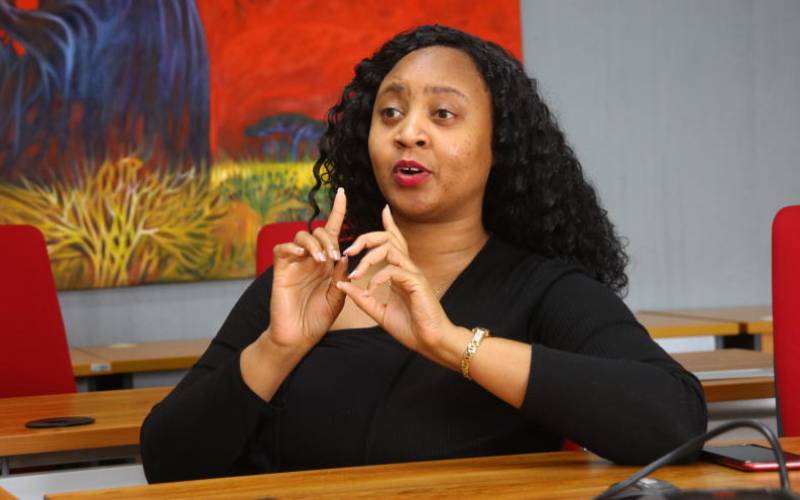
Schools must be aware of how their systems can predispose young people to mental illness. [Courtesy]
According to the Kenya Bureau of Statistics 2019 census, Kenya is a youthful country with persons aged between 10 and 34 constituting about half of the country’s population.
These young people are highly susceptible to developing mental illnesses, such as anxiety and depression. Most mental disorders develop between ages 10 and 24, and suicide is the second-leading cause of death among those aged 15 to 29.
While most chronic illnesses are associated with older age, mental illnesses affect the young due to biological, psychological and social factors associated with the transition from childhood to adulthood.
Biologically, the surge of testosterone in males and oestrogen in females causes physical and emotional changes. Psychologically there is the search for identity, independence and an existential desire for meaning.
At a personal level, an increase in responsibilities, separation from family to boarding schools, and pressure to excel weigh heavily on a developing brain.
Where factors, such as genetic predisposition, a traumatic childhood, unwanted pregnancy and poverty coexist, the young person becomes vulnerable to developing a mental disorder.
At a societal level, Kenyan youth face mental health risks associated with human rights violations, violence, substance abuse, sexual and gender identity issues, weight problems, HIV, cyberbullying and changes in the socioeconomic and climatic environment.
Mental disorders do not come with a label of depression or schizophrenia. They develop insidiously as symptoms to the individual and signs to those around, such as family members, teachers or peers.
The teacher may notice a lack of concentration in class, consistent inability to complete assignments and increased irritability. The parent may notice that the young person is spending longer periods alone, sleeping late and finding it difficult to follow instructions.
The community could notice deviance such as stealing, bullying or sexual harassment. At university level, the young person may miss classes, engage in excessive alcohol and substance use, and lag behind. The common denominator is an observable persistent change to problematic behaviour.
The traditional response to problematic behaviour in schools is punishment, predominantly corporal, manual, suspensions or expulsions. These are ineffective where a mental disorder exists and may worsen it. However, our schools and colleges lack psychosocial support for students leading to disrupted learning.
Teachers may lack skills, time or both. They may also not get the support of parents owing to stigma associated with mental illnesses. At college level, studies have shown a high prevalence of mental disorders, such as depression, but a low uptake of traditional mental health services since they are unacceptable to the youth. This calls for creative thinking around these challenges and listening to young people and engaging them to find solutions.
Schools must also be aware of how their systems can predispose young people to mental illness. Motivated by the need to have students pass examinations, many schools have routines that deprive learners of adequate sleep.
Changes needed for better school mental health systems need the support of the Ministry of Education, teachers, parents, students and other community leaders. There is also need to establish youth-friendly mental health services in all counties. Partnerships with professional mental health associations such as the Kenya Psychiatric Association and the Kenya Psychological Association would boost this transformation through technical advice.
There is a growing number of low-cost but effective mental health interventions targeting young people around the world. The citiesRISE is a good example of a multi-stakeholder initiative that includes many of the world’s leading experts and practitioners with Nairobi as one of the first five cities globally to develop the framework for a mental health friendly city.
It is dedicated to applying the best of global evidence and local community experience to scale up proven interventions and models with young people at the leading edge of change. The government should endeavour to partner with such organisations in scaling up effective mental health models.
The recent completion of the mental health taskforce report and the Kenya mental health action plan creates promise that policy makers are waking up to the realisation that mental health must be part of our public health agenda. We believe that investing in youth mental health is a leap towards attaining sustainable development.
Dr Chitayi is the president of the Kenya Psychiatric Association (KPA) and Moitreyee Sinha is the CEO and founder, citiesRISE.
 The Standard Group Plc is a multi-media organization with investments in media platforms spanning newspaper print
operations, television, radio broadcasting, digital and online services. The Standard Group is recognized as a
leading multi-media house in Kenya with a key influence in matters of national and international interest.
The Standard Group Plc is a multi-media organization with investments in media platforms spanning newspaper print
operations, television, radio broadcasting, digital and online services. The Standard Group is recognized as a
leading multi-media house in Kenya with a key influence in matters of national and international interest.











